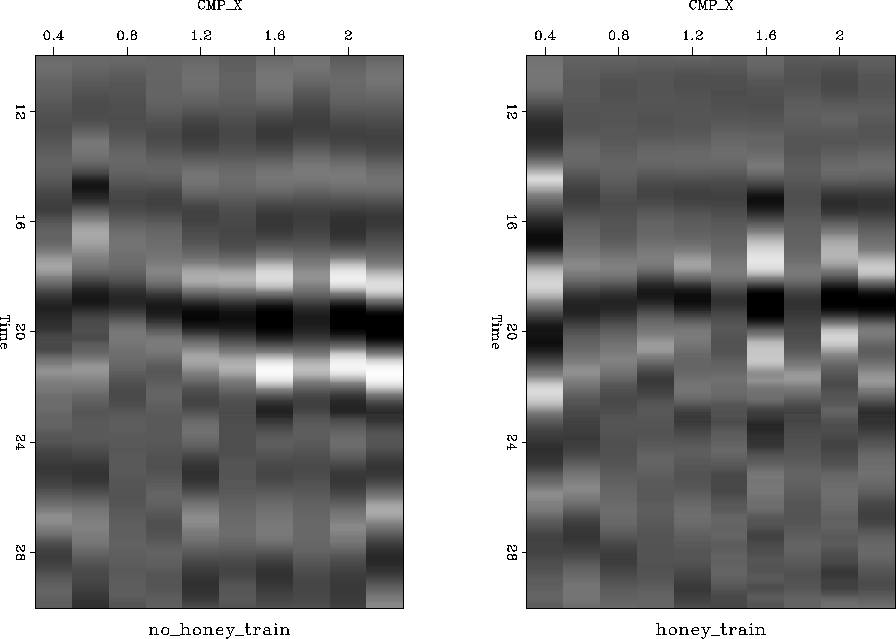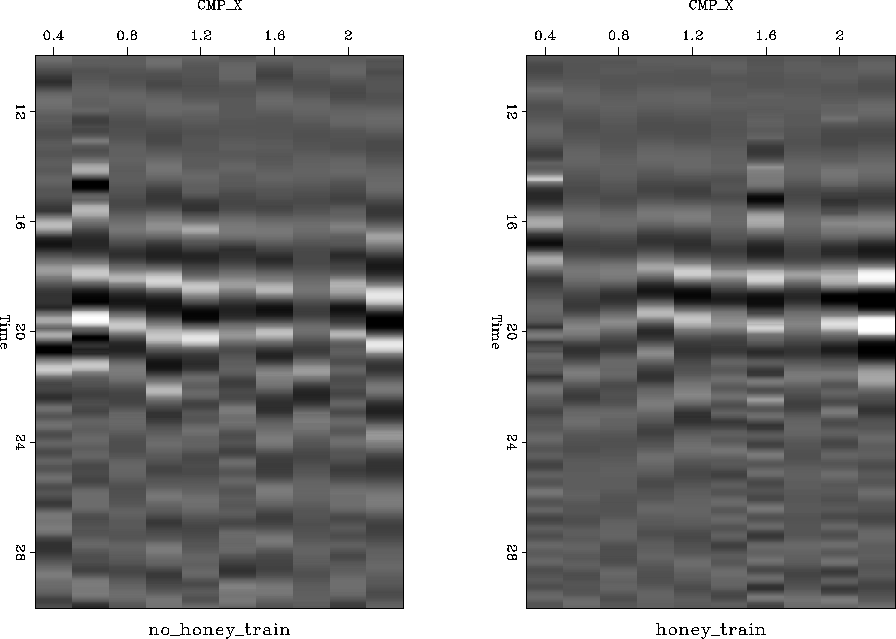Since the two experiments were conducted with very similar acquisition parameters, none of the `optimal' cross-equalizing methods that I discussed in my earlier paper were useful. The simple time domain match-filtering approach was used instead.
In this approach, a filter, ![]() , is designed on a training
window to map one survey,
, is designed on a training
window to map one survey, ![]() , onto the other,
, onto the other,
![]() , minimizing the regression:
, minimizing the regression:
| (1) |
|
htrain.300Hz
Figure 4 Training window for 300 Hz section. Left is without honey and right is with honey. |  |
|
htrain.700Hz
Figure 5 Training window for 700 Hz section. Left is without honey and right is with honey. |  |